September 3rd, 2024
11minute read
The preparations for the invasion of Normandy are almost beyond comprehension.
These man-made and natural obstacles proved to be some of the most effective defensive positions of the entire war.
And this was particularly so in the American sector.
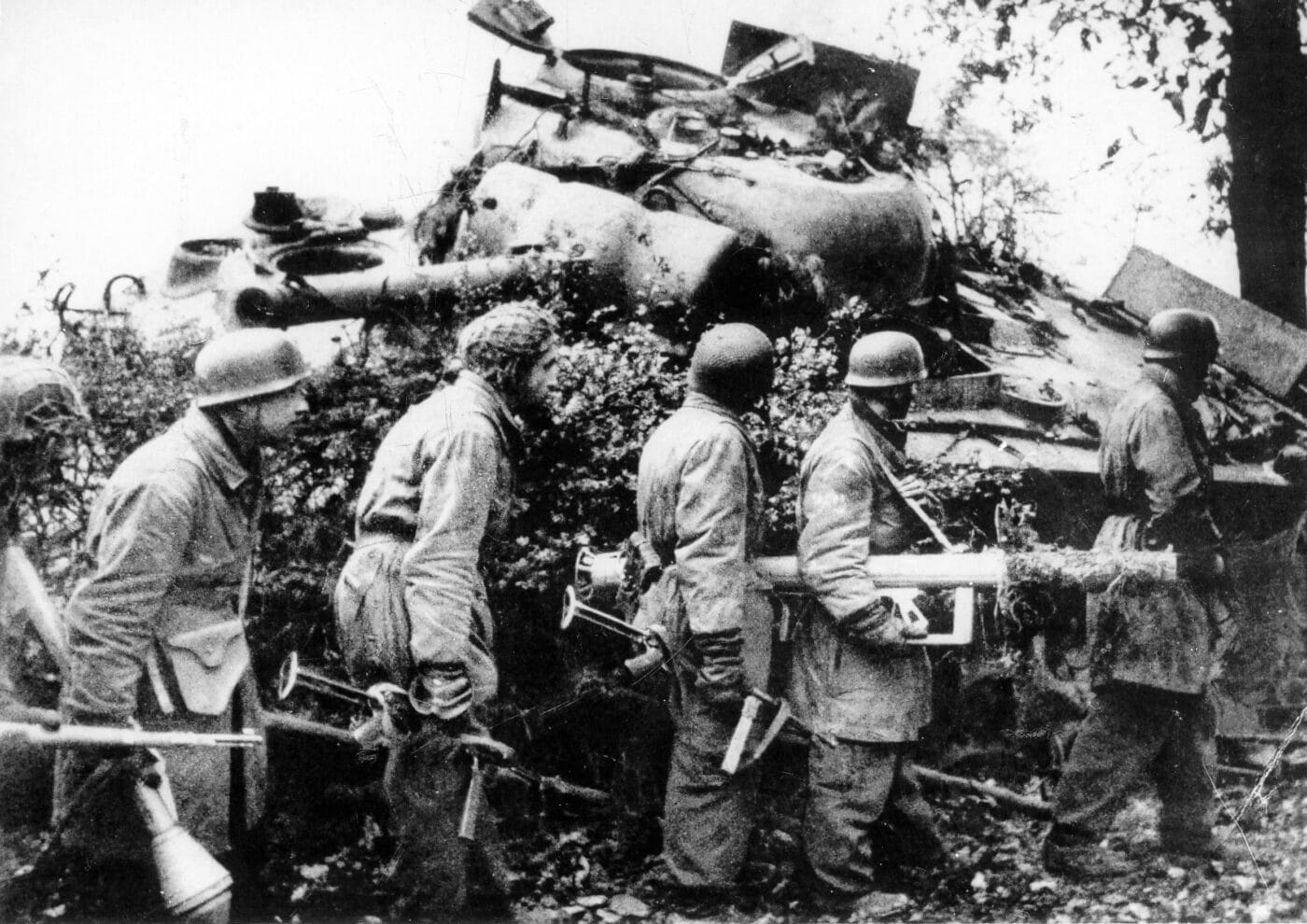
German paratroops look over a knocked-out Sherman tank in Normandy. The men carry a 88mm RPzB 54Panzerschreck(right) and thePanzerfaust60 anti-tank weapons. Image: Author’s collection
Each field was small, most less than 500 yards, with some less than 200 yards in size.
Atop the embankment grew the hedge, often featuring a tangle of vines, small trees and shrubs.
Some were accessible by road, but the roads in Normandy were normally quite narrow.
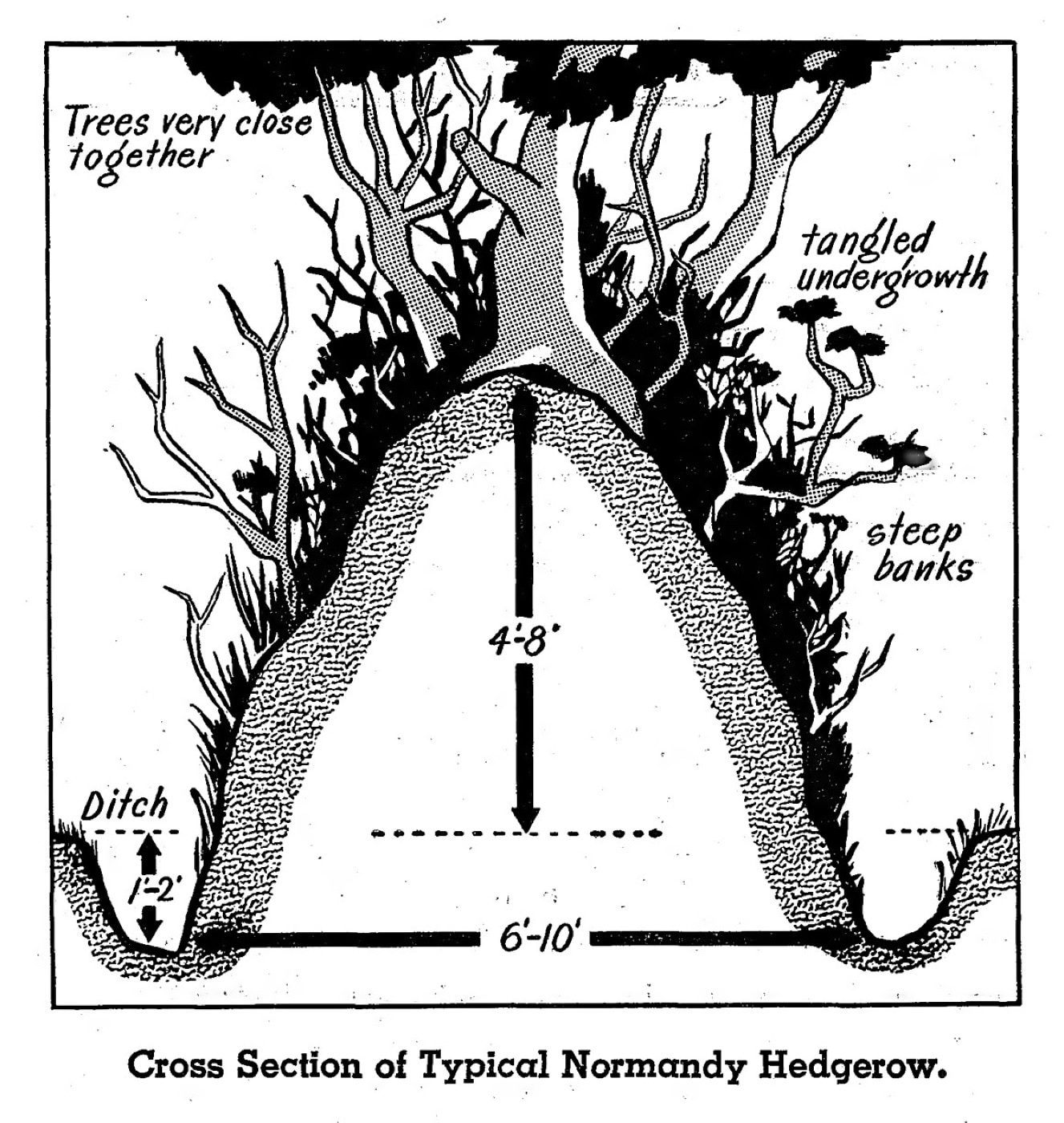
This hedgerow illustration is from “Combat Lessons”. It might give you an idea of what the hedgerows were really like. Image: Author’s collection
Many hedges were accessible by tiny, rutted wagon trails.
Almost everything about the Bocage country favored the German defenders.
The stage was set for a terrible fight to break out of Normandy.
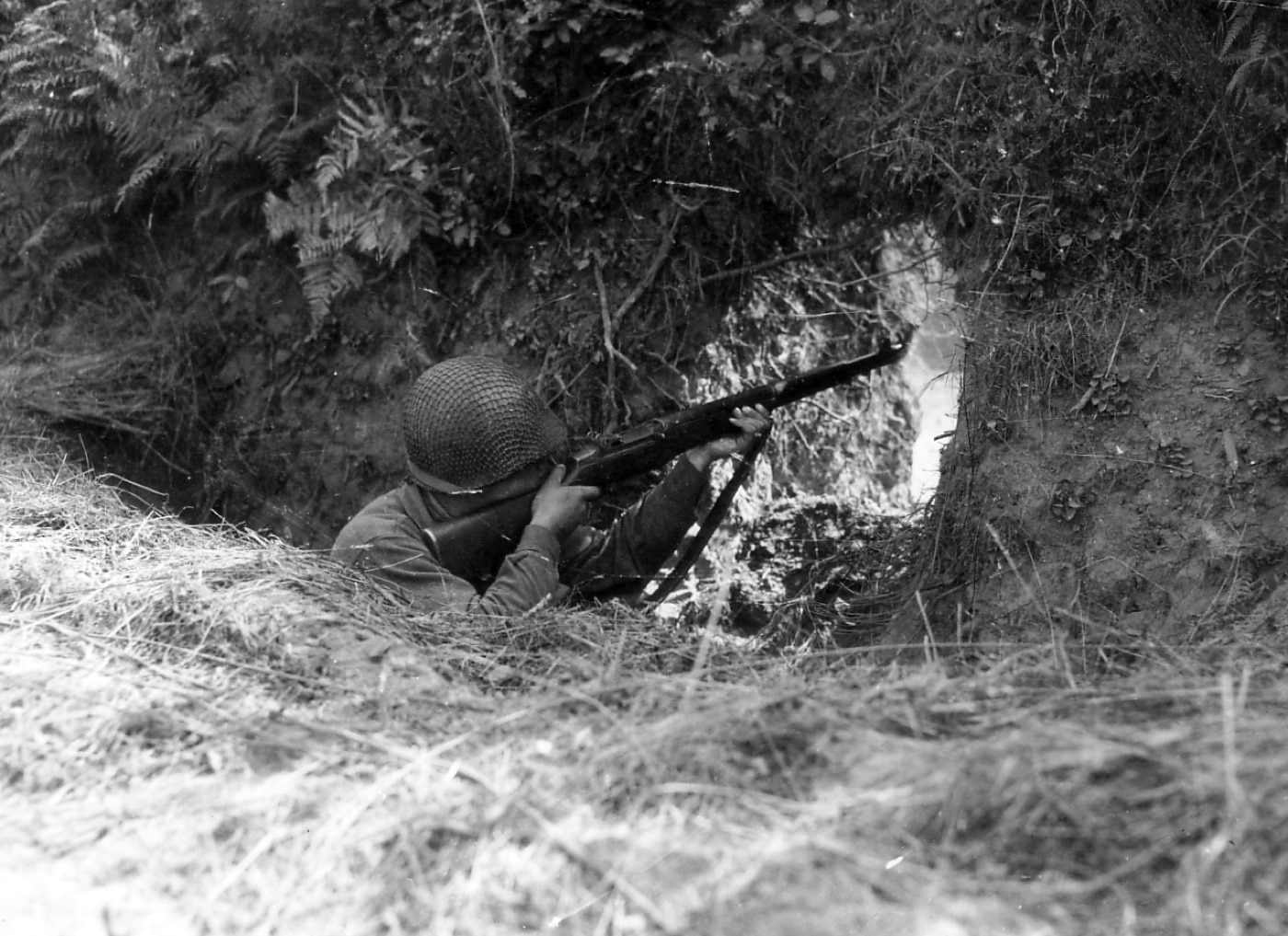
A U.S. soldier fires his M1 Garand rifle through a break in a hedgerow during the Normandy campaign. Image: NARA
Among the hedgerows, much of the American forces ability for fire-and-movement would be negated.
German defenses turned each farm field into a strongpoint protected by direct and indirect fire.
Light machine gun teams were ready to move to attack the American troops from the flanks.
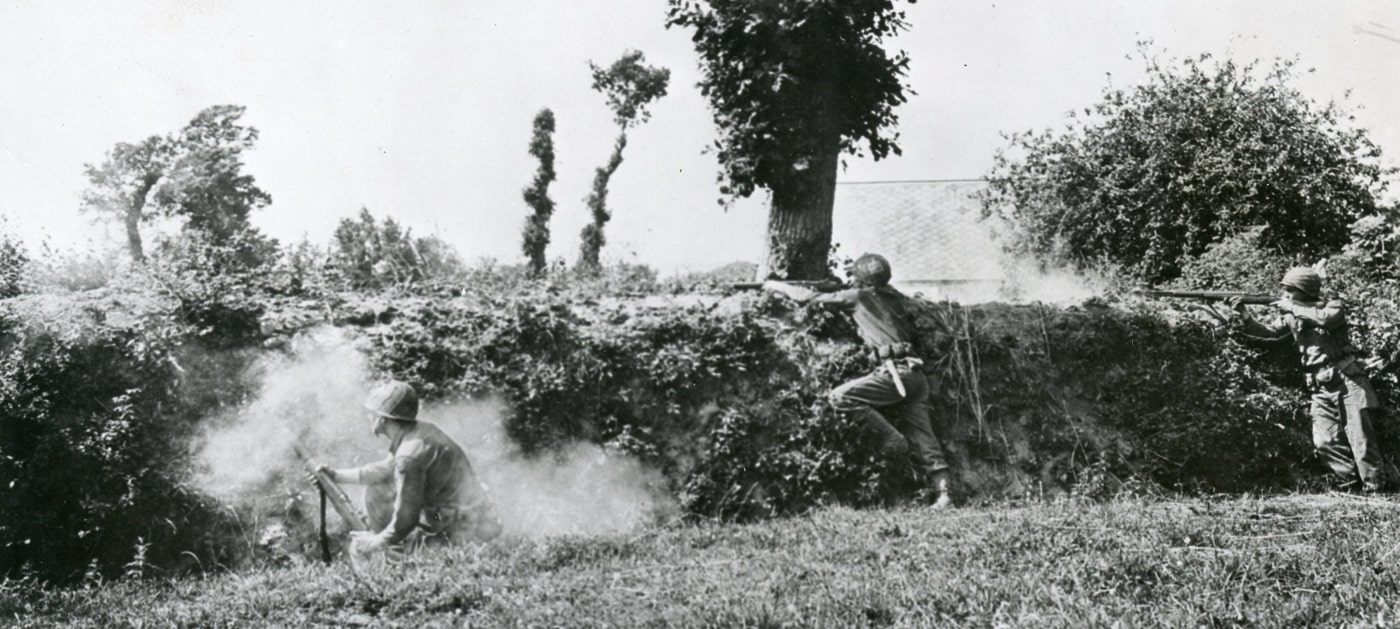
United States Army soldiers firing over a hedgerow in Normandy. Image: NARA
The German 8cm Granatwerfer 34 was highly effective, firing a nearly 8-pound shell out to about 1,300 yards.
Snipers were a critical component to the German defenses in Normandy.
The concern about snipers often made inexperienced units hesitant, often with dire consequences.
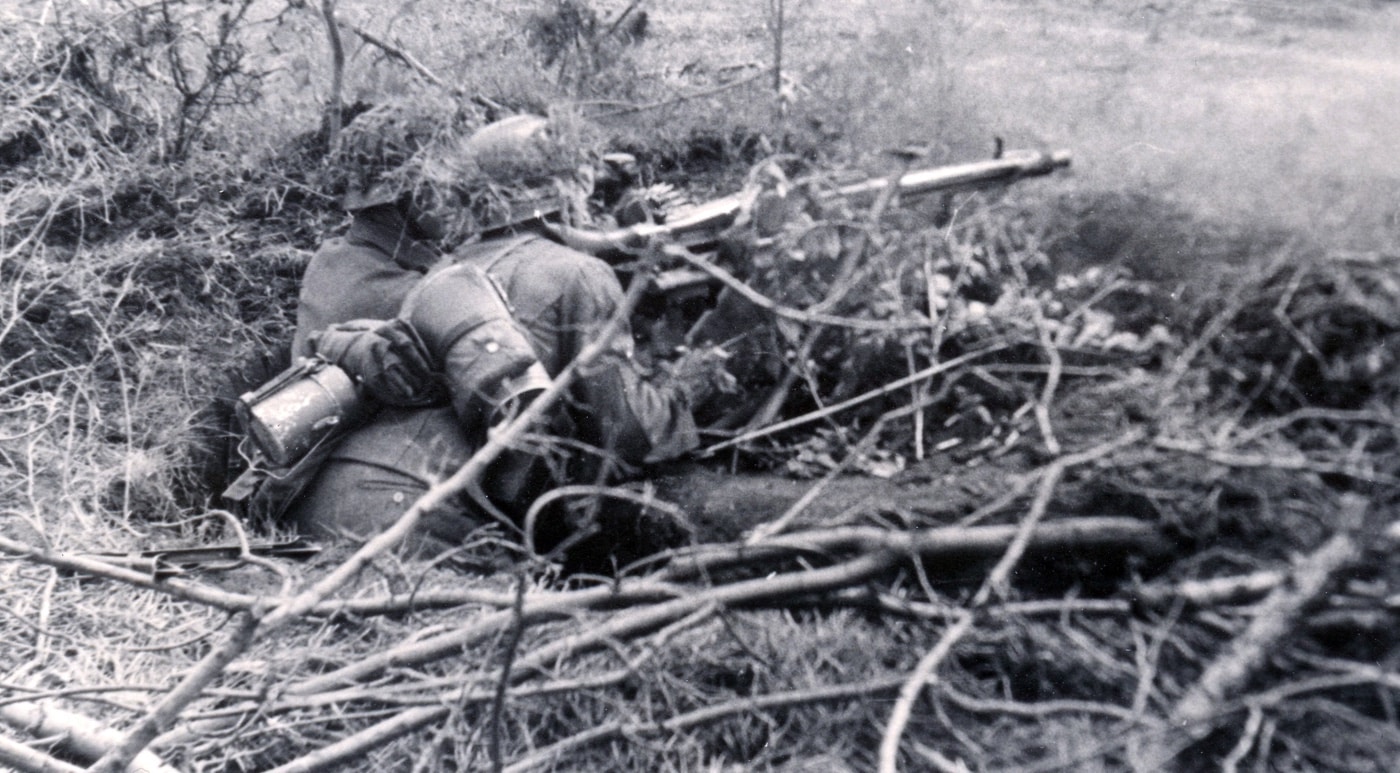
Machine guns, like this MG 42, were the cornerstones of the German defenses in Normandy. Image: Author’s collection
These exploded at irregular intervals, giving the impression that the position was still occupied by enemy forces.
High losses among tank commanders have been resulting from German snipers.
Keep buttoned up, as the German rifleman concentrates on such profitable targets.
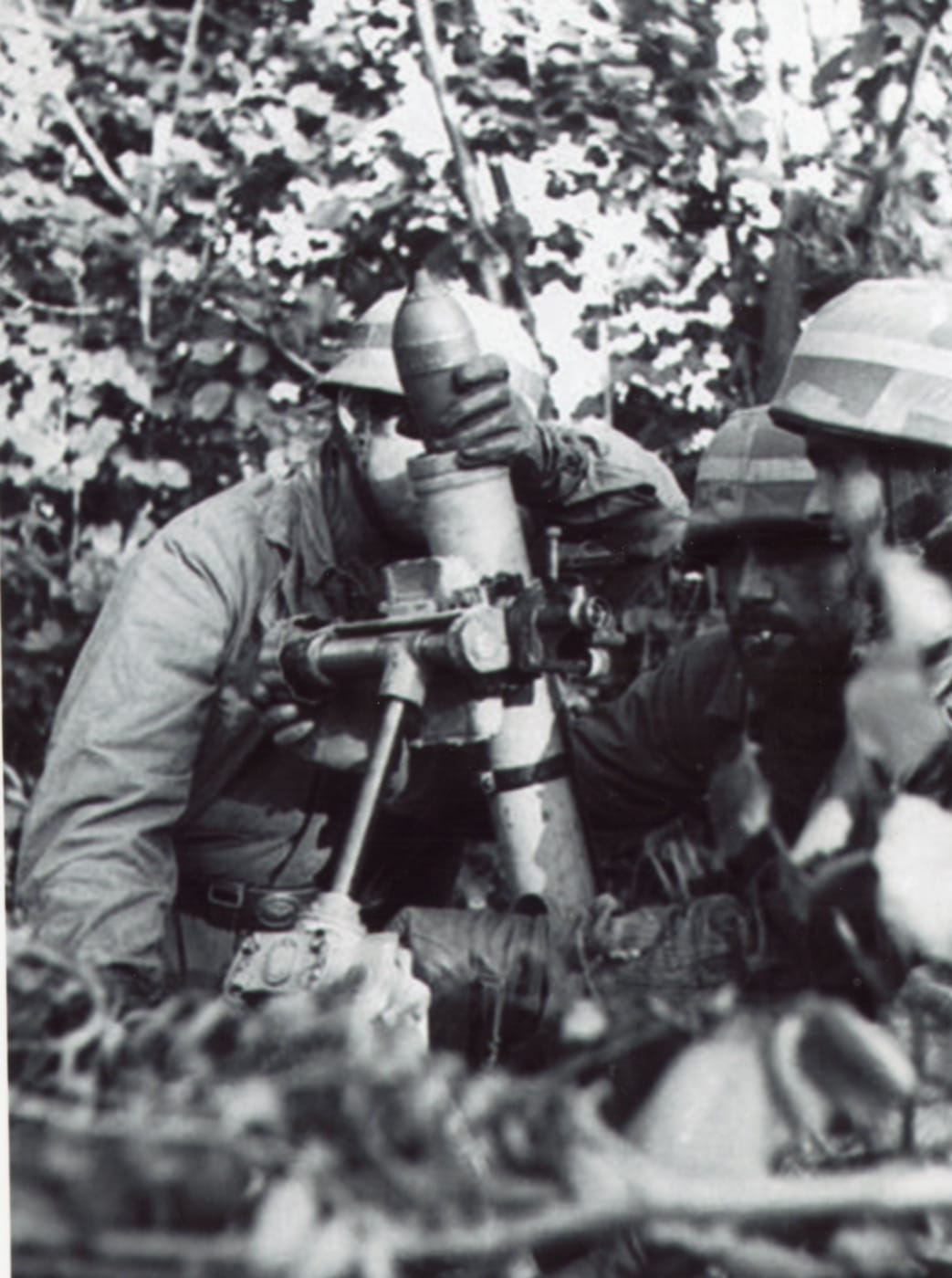
German paratroopers with an 8 cm “Granatwerfer 34” in action in Normandy. Up to 75% of American casualties in Normandy were due to German mortar fire. Image: Author’s collection
This is especially true in villages.
After an action the turret of the commanders tank is usually well marked with rifle bullets.
All personnel and automatic weapons were well dug in along the hedgerows in excellent firing positions.
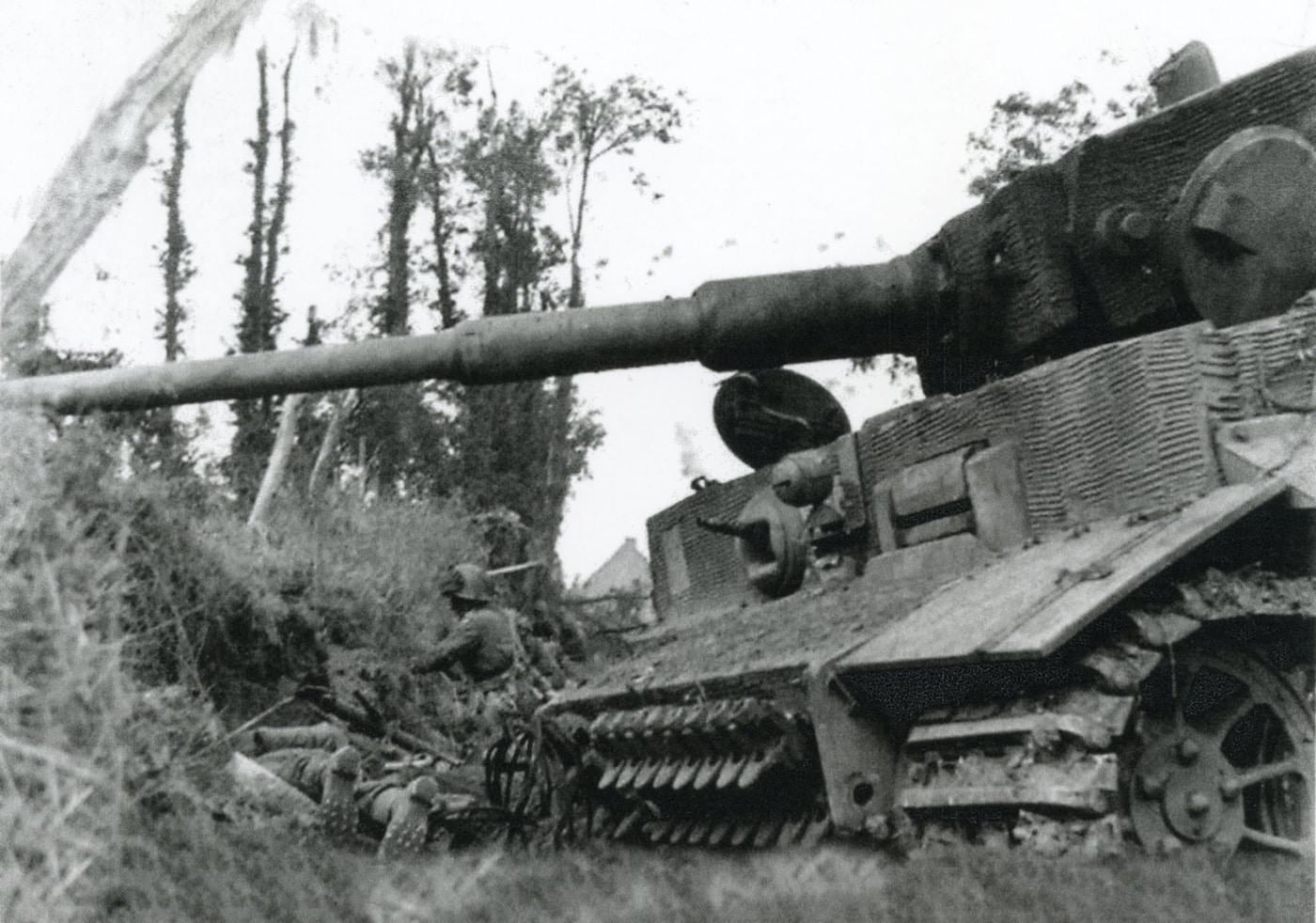
A PzKpfw VI Tiger I tank contributes its 88mm firepower to the defense of a hedgerow position. Image: Author’s collection
In most cases the approaches to these positions were covered by mortar fire.
Numerous snipers located in trees, houses, and towers were used.
The doctrine of fire-and-movement was too often forgotten, with dire consequences.
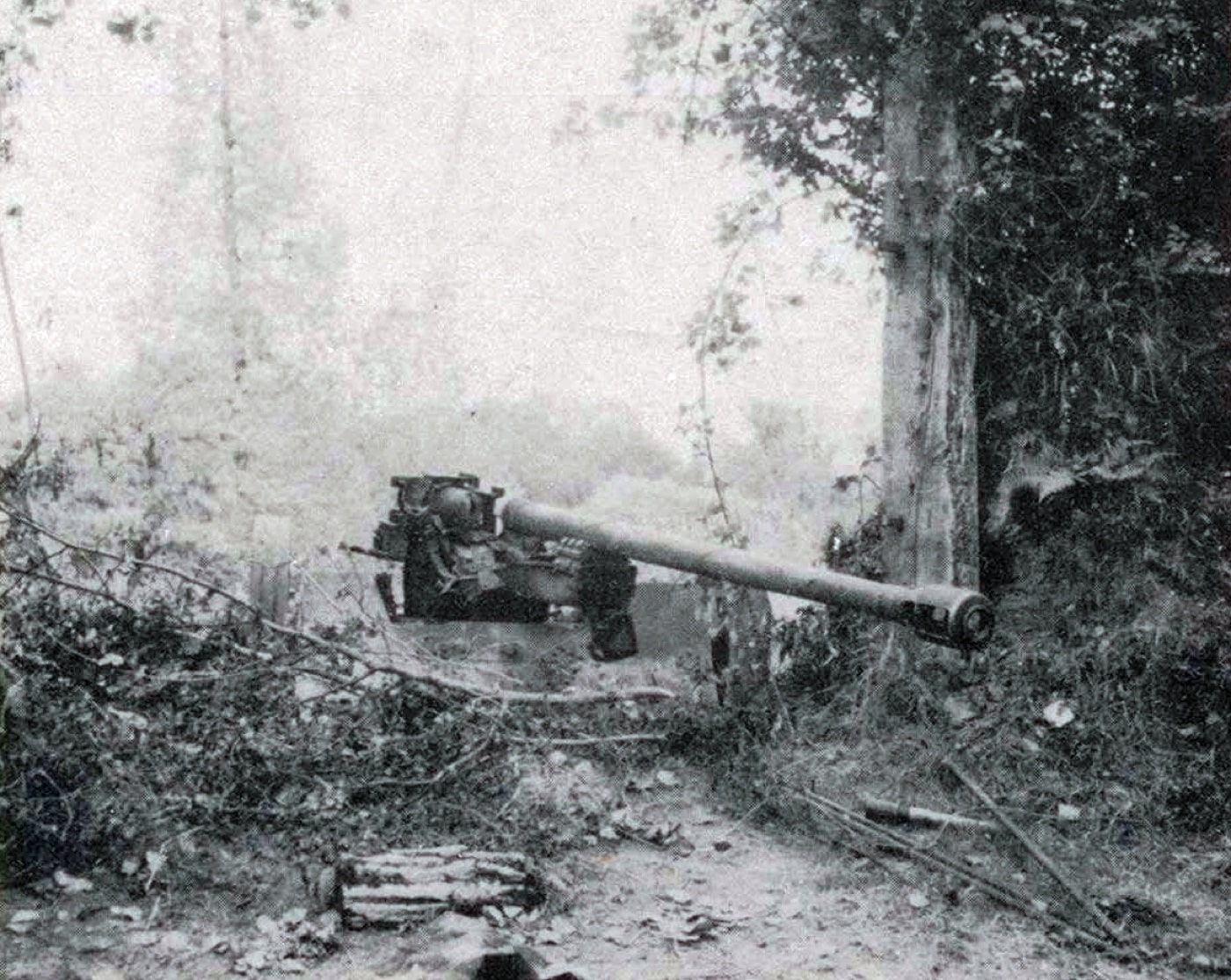
A German Pak 40 75mm anti-tank gun covers the opening to a farm field near St Lo. Image: NARA
Prisoners stated that the American infantry moved too cautiously and consequently failed to take weakly held positions.
They were surprised that artillery barrages were not followed up by determined infantry assaults.
An experienced corporal in the German 275th Infantry Division summed up German attitudes: Americans use infantry cautiously.

German snipers in Normandy were highly effective and responsible for holding up many attacks. Image: Author’s collection
If they used it the way Russians do, they would be in Paris now.
Once I ordered a squad to advance from one hedgerow to another.
During the movement one man was shot by a sniper firing one round.
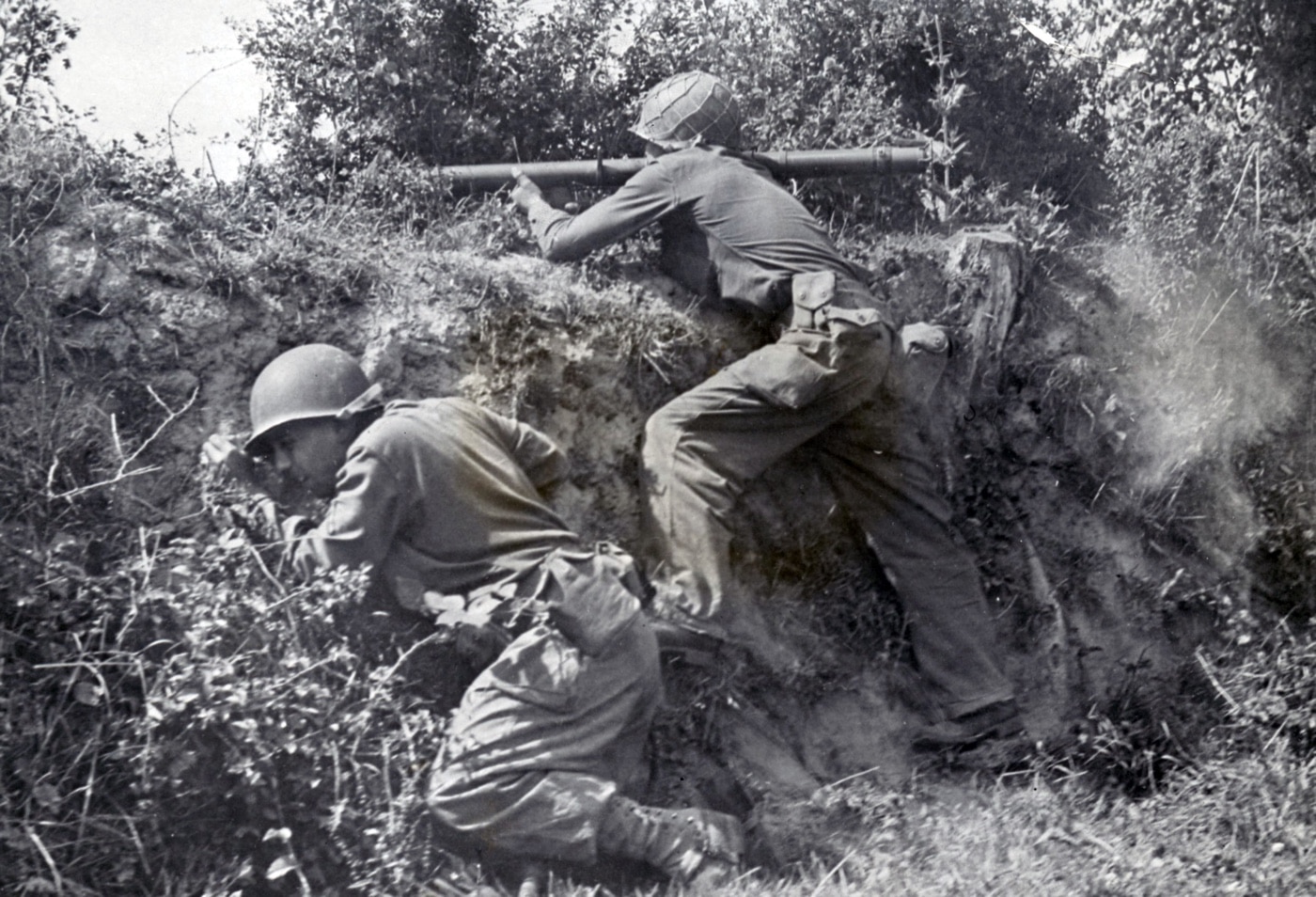
The bazooka was used as portable artillery as it is here firing at a German machine gun emplacement. Image: NARA
Another problem encountered with green troops was their inability to open fire on the enemy.
Reinforcements have no idea of when to open fire.
Reconnaissance by fire is unknown to them.
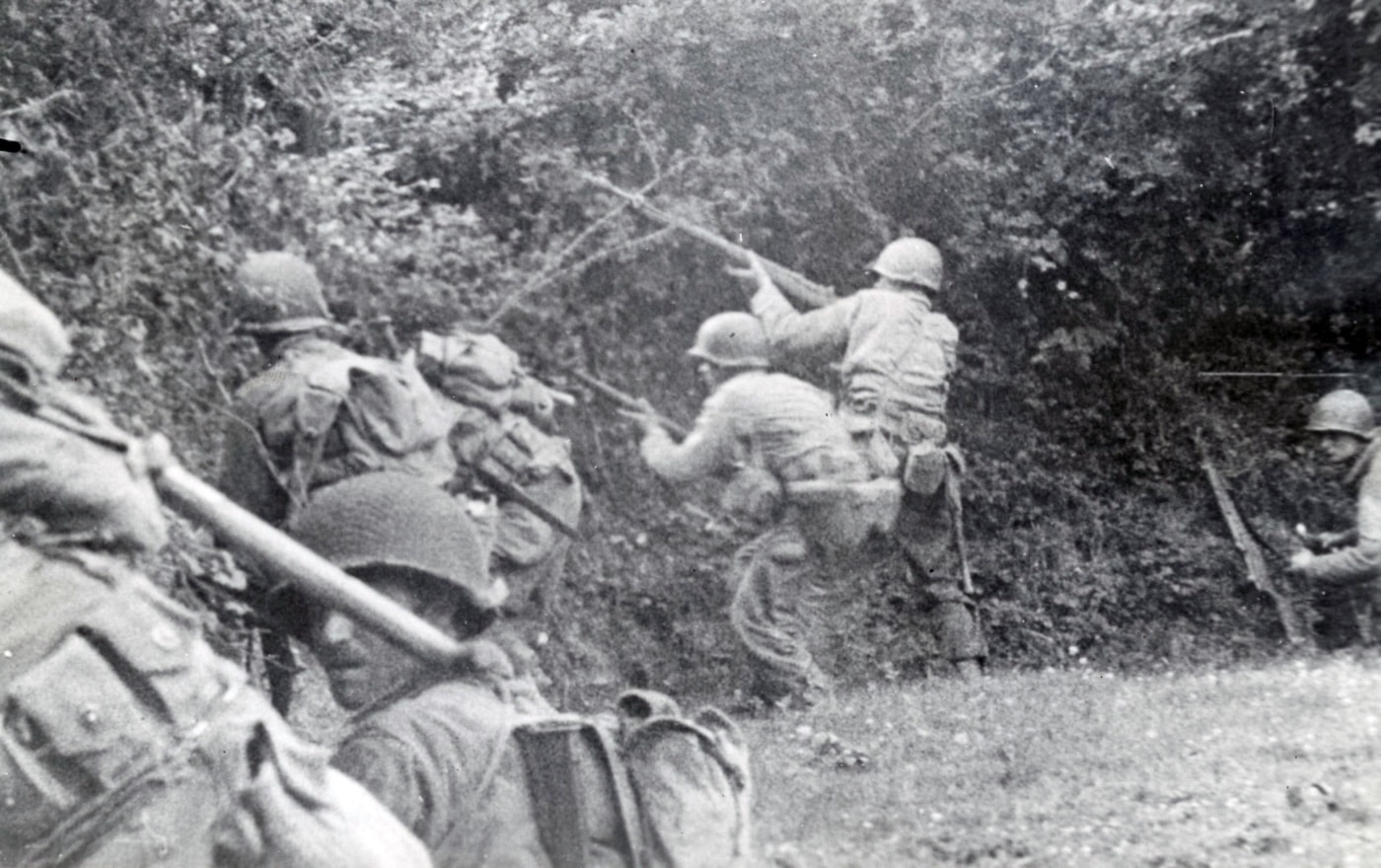
U.S. infantrymen advance in rushes to assault a German hedgerow position. Image: NARA
They thought they might waste ammunition.
My father served with the 8thInfantry Division, and he was a veteran of the hedgerow fighting.
He described to me that the men had to unlearn certain concepts that were impressed upon them in training.
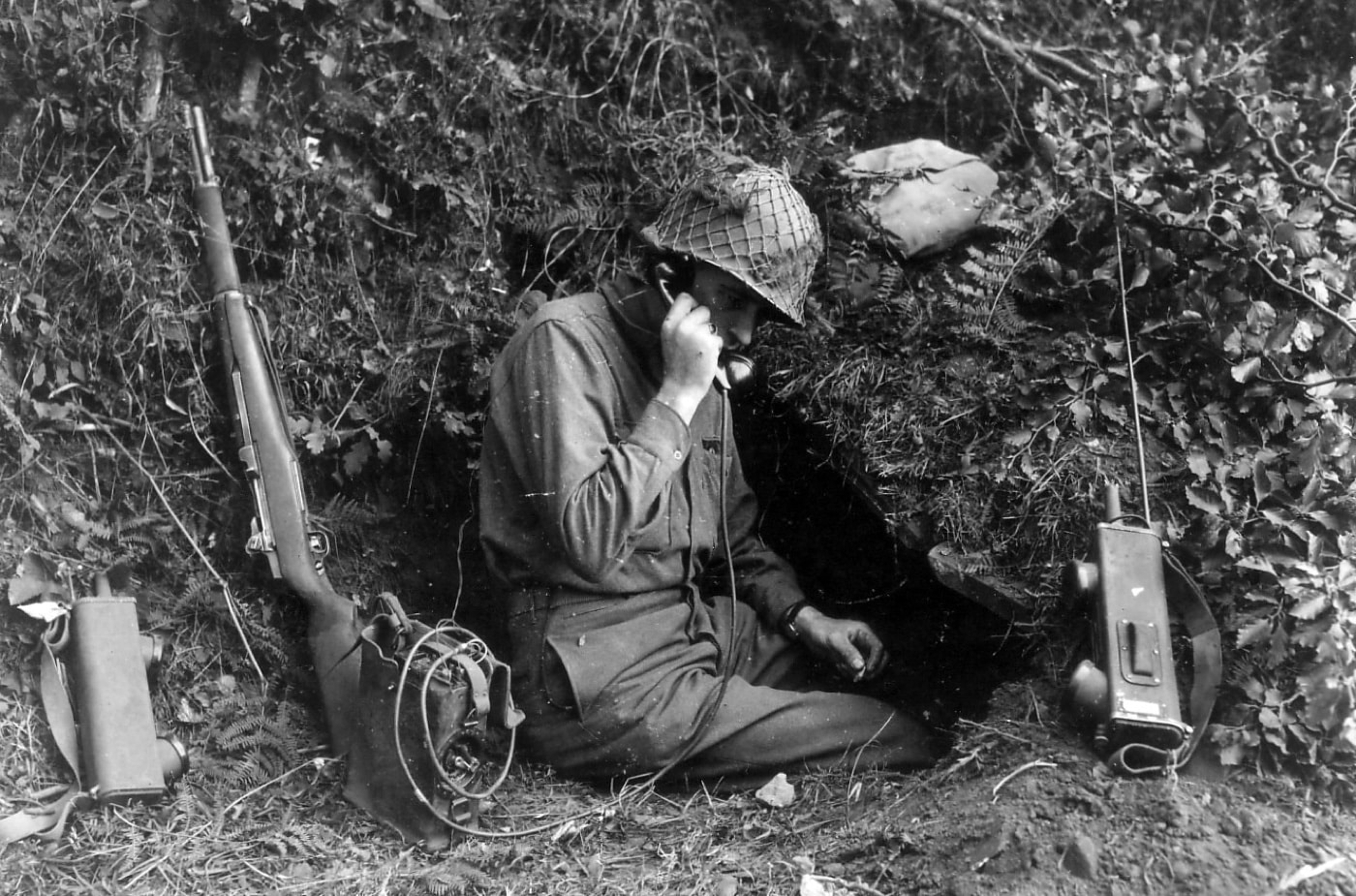
This is an American forward command post dug into a hedge. Forward observation and tactical coordination was essential for a successful attack. Image: NARA
He commented: After a week in Normandy, we shot at anything that looked or sounded suspicious.
Build up a good strong base of fire with automatic rifles and light machine guns.
The heavy machine guns are much more effective, but it is difficult to keep them with the advance.
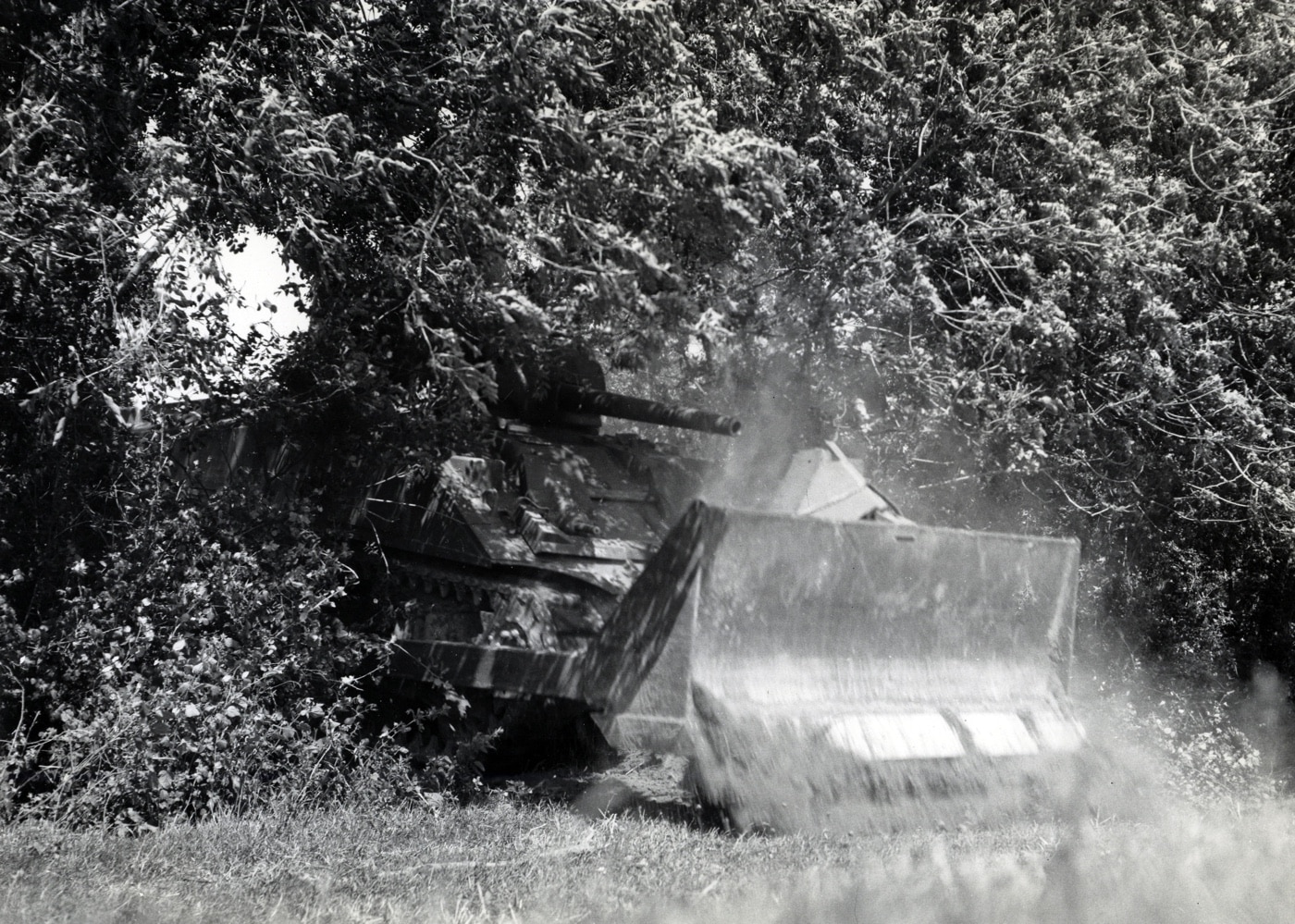
Sherman bulldozer tanks proved to be the most effective means to punch through a hedgerow in the Bocage country. Image: NARA
Use your 60-mm mortars to deepen and thicken your covering fire.
The first solution came in the form of the M4 Sherman tank fitted with a bulldozer blade.
General Eisenhower called the tank-dozers a Godsend.
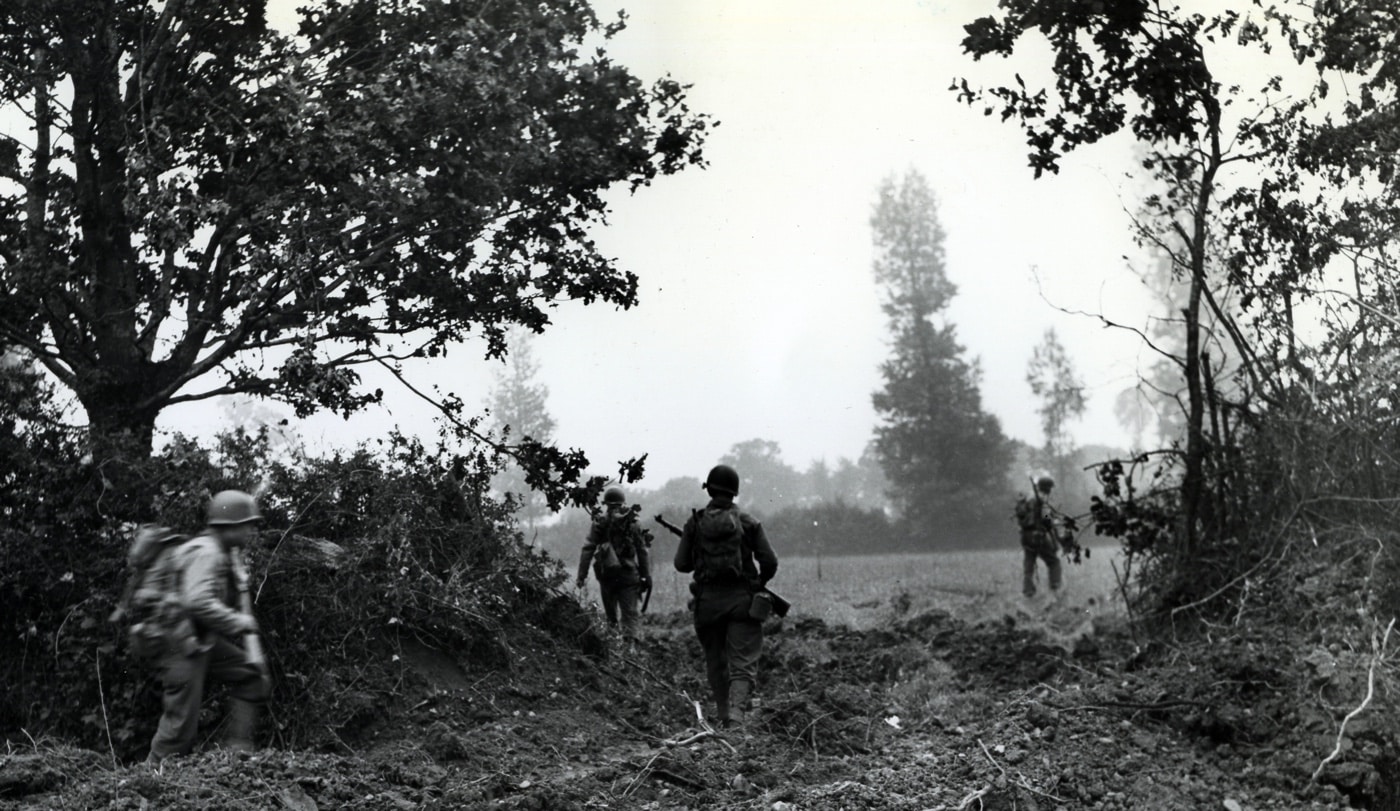
After the bulldozers or hedge-cutters opened a path, the GI infantry had a better chance to reach their objectives. Image: NARA
Unfortunately, there were far too few of them available in Normandy, and other means were needed quickly.
Other innovations came from American tank units: First Lieutenant Charles B. Tanks fitted with the Culin gadget were often known as Rhinos.
By late July, more than 60% of all US 1stArmy tanks were fitted with the hedge-cutters.
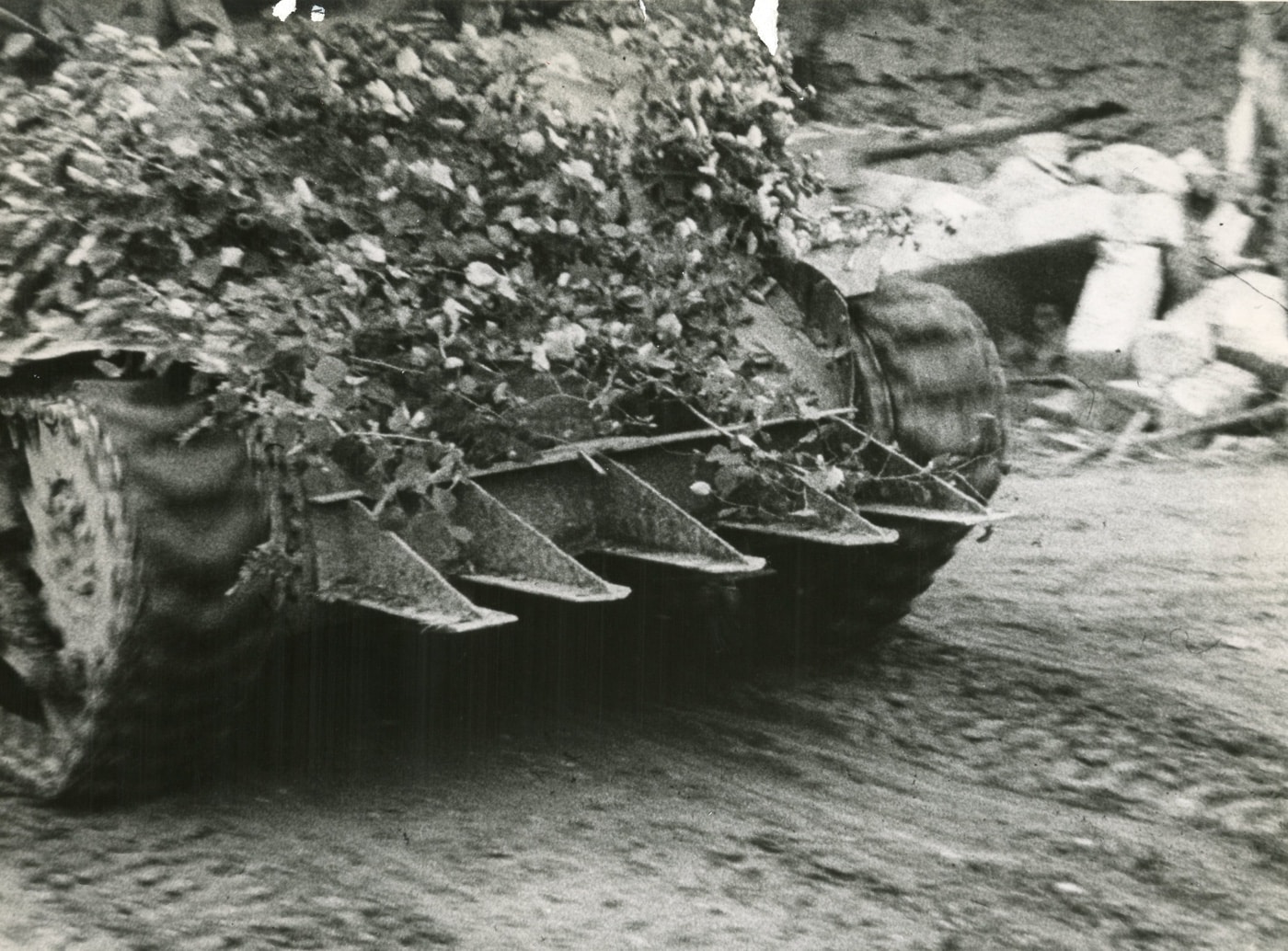
The shortage of “dozer tanks” prompted the development of the hedge-cutter prongs attached to many US medium tanks, light tanks, and tank destroyers in Normandy. Image: NARA
This attack was very successful.
There was a 3,000-yard advance with a 90-degree change in direction to the right without losing a tank.
In other words, the tanks leapfrog each other.
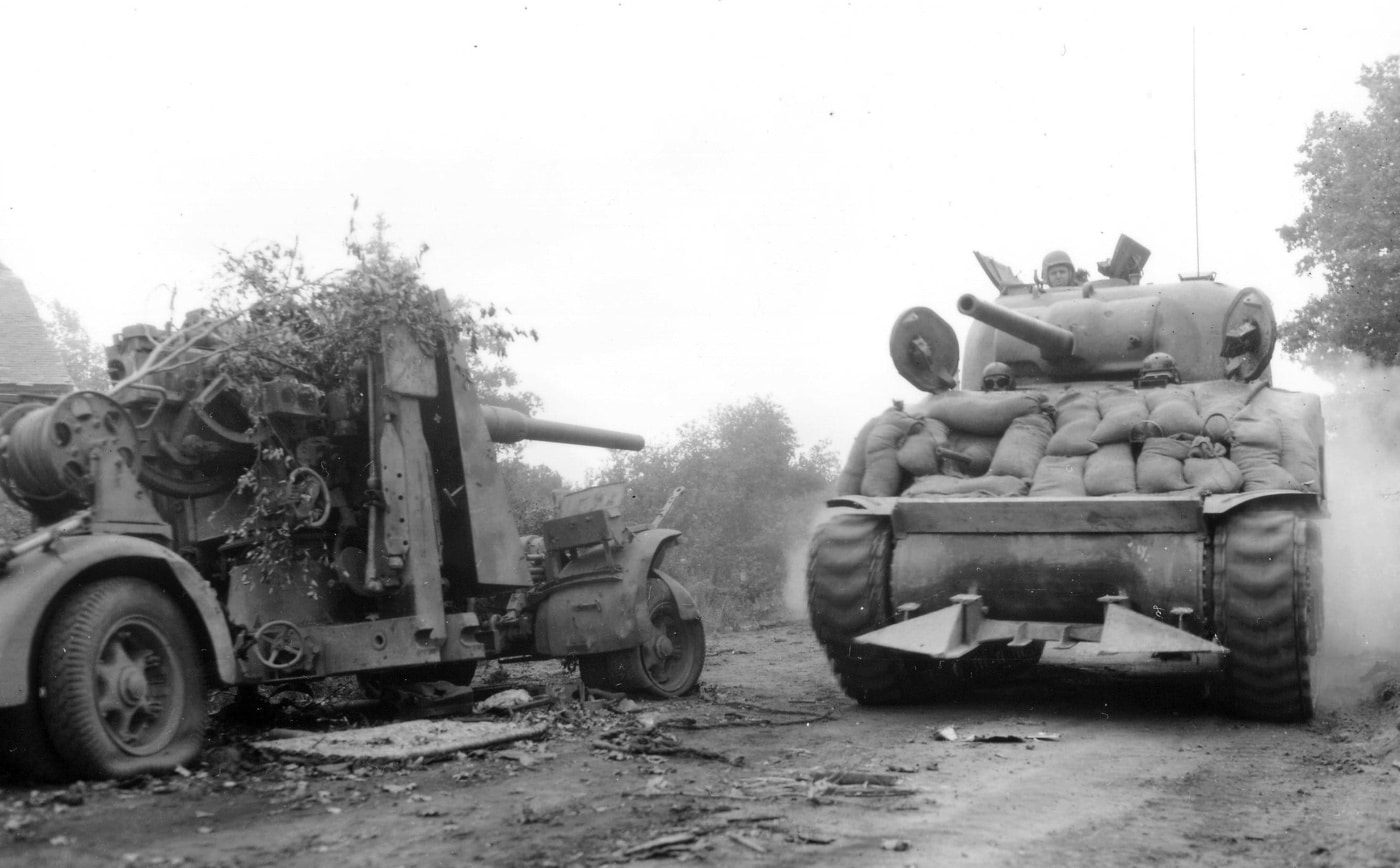
An M4 Sherman “Rhino” with a hedge-cutter on the bow passes a destroyedGerman 88mm Flak 36 dual-purpose AA and AT gun. Image: NARA
Two improvements on these prongs have been made in the First Army.
The other is a bumper made from captured railroad irons.
Meanwhile, tank and infantry team tactics were taught and rehearsed just beyond the Normandy beachhead.
More and more replacements learned enough to make them effective in the Bocage.




